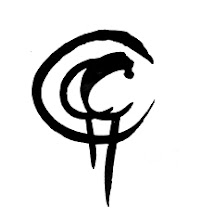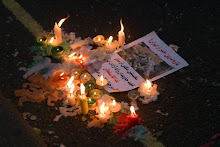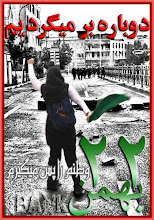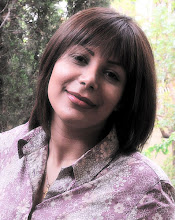Shall we start again?
House of Words
This is an exhibition of contemporary art which is on show now until August 29th 2009 in Dr. Johnson’s House, in Gough Square, just North of Fleet St. in Central London. It’s a good idea to abandon public transport somewhere around High Holborn so you have time to get involved in the tangle of streets on the north side of Gough Square and transport yourself back to 18th Century London. At least that’s what I did. And then I did it again four days later. Upon reflection, I’m not so sure that it is a good idea because I kept wondering what all these weird bits of ‘modern art’ were doing hanging around. And this is the problem that both the curators and artists have to deal with.
Oh England
What defines England? Well if you were to list five of the most important things, surely the English language would appear somewhere on almost anyone’s list – wouldn’t it? And who has defined the English language? Well, again, many things and many people, but Dr. Johnson’s dictionary must be among the most significant. So producers of contemporary art are either working with or competing against 300 years of the history of the English identity. Foolhardy you might think.
Getting to Grips with 'Modern Art.'
It was an uncomfortable, slightly fractured experience at first. I kept on finding that I was ignoring the art and absorbing myself in the stuff of the house. The second time I went, things fared a little better. I got much more absorbed in the work of the two of the artists, namely Jane Prophet and Caroline Broadhead.
Unspeakable
The brilliantly named Prophet did unspeakable things to unsuspecting dictionaries, which I loved. British literary culture is deeply suspicious of people who do stuff to books. We are nauseatingly precious about the damn things. Ludicrous when you think how many are pulped each year, how much we over-publish, - a very good thing from a literary point of view because it means we have a fighting chance of actually producing and READING some quite good stuff – and how much dross there is in print - also when you think how many books rest politely on people’s shelves unread. So the Prophetess took her laser thingy whatever it is and these dictionaries were lacerated and their pages made to produce shapes of butterflies and umbrellas and trees that turned out to be flames and so on. One included a woman’s profile being sick or breathing fire or with trees coming out of her month. She picked pages with related words which made you realise how many words meaning something similar are constructed from or grow out of the same etymological root and how many words in the English language refer to sex, sexuality or bodily function or are just plain rude. It sounds a bit obvious, but it worked and it was delicate and beautiful and followed an approximately sequential narrative which pleases nerdy people like me. And there was a gorgeous one hanging in a cupboard – reminiscent of the paper artist’s work in ‘Spectacular Craft’ at the V&A.
Repetition
The other work I grew to love was Caroline Broadhead’s chair which was actually the repeated ghostly apparition of Johnson’s chair, or so it was claimed. The chair was a strange shaped thing with a very long seat with a ridge at the edge, so it looked really uncomfortable. It’s reputed to be his chair at the pub, and someone has suggested that it may be that you’re supposed to sit on it backwards, leaning forwards against the back, one leg each side of the chair, which makes sense of its narrowness I suppose. Anyway, this apparition reappeared in several different places, at one time on top of a door in miniature and made of bronze, again behind a wooden window shutter, imprinted into paper and again as a 3-d ‘drawing,’ here it’s constructed out of what looked like piano wires, in many very straight parallel lines – as though it had been ‘drawn’ with a ruler.
I’m advised by the curator’s notes that this alludes to the repeated uses of language and the way it mutates with use. I liked the repetition because I like it aesthetically. I wasn’t overwhelmed by too much stuff. If there is a fault with the exhibition it is perhaps that - too much stuff. I’m not sure it matters though, and I’m damn sure Johnson wouldn’t have minded.
Afterthought:
Come to think of it, houses of that sort like clutter. They respond well to it. It’s contemporary art spaces that don’t. So on second thoughts- bring on the clutter. I might have found those annoying little books and the ‘found text’ stuff irritating, but it doesn’t mean you will.
Afterword:
Pourism: a mixture of English and Iranian words. This is one of the words suggested by a visitor for a new dictionary of English being compiled as an ‘interactive’ exhibit. It had turned up when I went the second time. You write down your word and its meaning on paper and, for no apparent reason, it might appear on a screen built into a cupboard. As a piece of art it’s cumbersome – putting it mildly. As an idea it’s quite cute. If more words like these turn up then the idea will have proved itself even if its articulation as artefact really isn’t convincing. The word, I guess, is a reference to the vagaries of ‘Farlish,’ which means the same kind of thing. I would imagine Pourism is gag at pour old Aryanpour’s expense. Farlish is used by both Iranians and English speakers who use each other’s languages and fiddle about with them but particularly when you try writing Farsi using English / Latin script or English using Farsi script.
Sunday, 7 June 2009
Subscribe to:
Post Comments (Atom)












































No comments:
Post a Comment